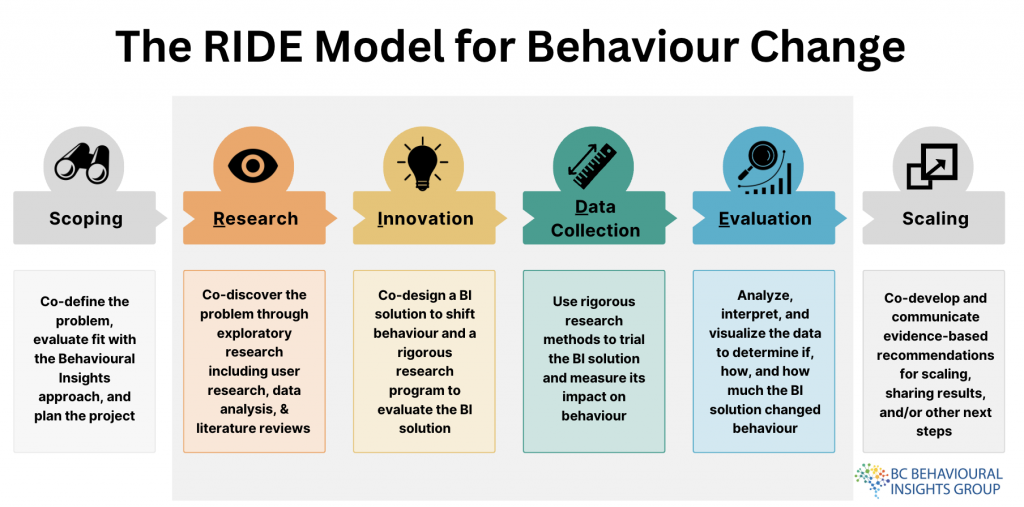Resources for the RIDE
Most Behavioural Insights projects trace the steps of the scientific method, which is captured by the RIDE model pictured above.
The accordions below contain general resources for using the Behavioural Insights approach as well as resources for each step of the RIDE model.
*Resources are continually being added to this page. Submit suggestions to dibs@sauder.ubc.ca.*
General Resources
One-pagers
- Basic BI concepts: Overview of BIT’s EAST framework (condensed by UBC-DIBS)
- Basic BI project map: Overview of BC BIG’s RIDE project process (condensed by UBC-DIBS)
- Principles for using BI: Six Principles for Applying Behavioural Insights in Our Work in Canada
Behavioural Insights solutions
Guides for Conducting BI projects
- BIT’s Target, Explore, Solution, Trial, Scale Guide
- BIT’s Test, learn, adapt: Developing public policy with randomised controlled trials
- OECD’s BASIC Toolkit of Tools and Ethics for Applied Behavioural Insights
- BVA Nudge Unit’s The Hitchhiker’s Guide to Applied Behavioural Science
- Monash University Scale Up Toolkit
- UN Practitioner’s Guide to Getting Started with Behavioural Science
Approaches to Changing Behaviour
- BC Ministry of Jobs, Economic Development and Competitiveness (2020). Policy approaches playbook: Considerations for policy development [White paper]. https://www2.gov.bc.ca/assets/gov/government/about-the-bc-government/regulatory-reform/pdfs/policy_approaches_playbook.pdf
- OECD Observatory of Public Sector Innovation. (n.d.). Toolkit Navigator. https://oecd-opsi.org/toolkit-navigator/
Downloads
Ethics

Discuss and evaluate ethical considerations related to Behavioural Insights and/or experimentation at each project stage
BI Ethics
- Blumenthal-Barby, J. S., & Burroughs, H. (2012) Seeking better health care outcomes: The ethics of using the “nudge”. The American Journal of Bioethics, 12(2), 1-10. doi: 10.1080/15265161.2011.634481
- Schubert, C. (2016, January 22). A note on the ethics of nudges [Blog post]. https://voxeu.org/article/note-ethics-nudges
- Sunstein, C. R. (2015). The ethics of nudging. Yale Journal on Regulation, 32 (2), 413-450. doi: 10.2139/ssrn.2526341
- Sunstein, C. R. (2018). Misconceptions about nudges. Journal of Behavioral Economics for Policy, 2 (1), 61-67. https://sabeconomics.org/jbep/jbep-2-1/
Sludge vs. Nudge
- Soman, D. (2020). Sludge: A very short introduction [White paper]. https://static1.squarespace.com/static/5d1e3407108c4a0001f99a0f/t/5ef25d50dba4c53abd620cdf/1592941906912/BEARxBIOrg-Sludge-Introduction.pdf
- Soman, D., Cowen, D., Kannan, N., & Feng, B. (2019). Seeing sludge: Towards a dashboard to help organizations recognize impedance to end-user decisions and action [White paper]. https://static1.squarespace.com/static/5d1e3407108c4a0001f99a0f/t/5d8a6fc416577b70f51b896c/1569353670613/BEARxBIOrg-Seeing-Sludge.pdf
- Sunstein, C. R. (2020). Sludge audits. Behavioural Public Policy, 1-20. doi: 10.1017/bpp.2019.32
research ethics
- Canada’s Panel on Research Ethics offers a free online Course on Research Ethics (TCPS 2 CORE), which is standard ethics training for all Canadian researchers. The course can be completed in 2-4 hours and generates a certificate, which is required by many research institutions as a prerequisite for conducting research.
Design ethics
- The Danish Design Center’s Digital Ethics Compass is “a tool to help companies make the right decisions from a design ethical standpoint”
- Ethical Design Resources compendium of ethical design articles, frameworks, tools, and more
- Open Data Institute’s Data Ethics Canvas “encourages you to ask important questions about projects that use data, and reflect on the responses”
Scoping
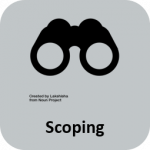
Co-define the problem, evaluate fit with the Behavioural Insights approach, and plan the project
Key Activities during Scoping
Working cooperatively with project partners and members of impacted populations:
- Conduct a needs assessment.
- Use tools like behaviour trees and the MISFIT criteria to explore the problem space and define the problem. Key questions include:
- What is the big picture problem and why is it a problem?
- What is the target behaviour?
- Who is the population of interest?
- What are likely barriers and motivators?
- Is it possible to reach the population and to measure and record their behaviour?
- Discuss and evaluate relevant ethical considerations for using the Behavioural Insights approach to encourage behaviour change; evaluating the ethics and go-no go decision criteria to ensure the project remains a fit for a BI trial
- Collaborate to plan together for project success.
- Make a decision about how to move forward. Options include proceeding with a full BI project including a trial, applying a BI lens/audit, using a different toolkit instead of or in addition to BI, pausing the project until a more appropriate time, or cancelling the project.
downloads
Research

Co-discover the problem through exploratory research including user research, data analysis, & literature reviews
Key Activities
Working cooperatively with project partners and members of impacted populations:
- Discuss and evaluate relevant ethical considerations for conducting exploratory research. Obtain approval for all research plans from a Behavioural Research Ethics Board and/or project partners.
- Plan which research questions to answer with exploratory research and choose appropriate research methods. Key questions include:
- What is the target behaviour?
- Who is the population of interest?
- What are the relevant barriers and motivators?
- How can we reach the population of interest?
- How can we measure and record behaviour?
- Which Behavioural Insights tools have previously been used to change this or similar behaviours? How and to what effect?
- Which research designs have been used in similar contexts? How and to what effect?
- Plan and conduct secondary research (i.e., an academic literature review and a cross-jurisdictional scan) to learn from previous lab and field projects.
- Plan and conduct primary research (e.g., interviews, surveys, or focus groups). Plans should consider who will be included, how the research will be conducted, what materials will need to be developed, and what data will be collected.
- Analyze, interpret, and visualize the results of the exploratory research.
- Synthesize the results of the exploratory research to inform solution and research design.
Conducting Secondary Research
- Tips for secondary research
- Academic literature review: For recommended sources, visit the BI Library page under “BI Case Studies”.
- Note: Many academic journals are behind paywalls. Check SSRN for an open-access version of the paper. If no open-access version is available, students in UBC’s Behavioural Insights programs can email the TA to request the article.
- Cross-jurisdictional scan: For recommended sources, visit the BI Library page under “BI Case Studies”.
- Baseline data sources (e.g., contextual information)
- Citing sources: APA has a great, searchable blog with examples of how to cite most types of materials: https://apastyle.apa.org/style-grammar-guidelines/references/examples/white-paper-references
- Other tips: The librarians at the David Lam Library at UBC Sauder School of Business have created a tailored guide for conducting and citing secondary research in Behavioural Insights: https://guides.library.ubc.ca/behaviouralinsights.
Conducting Primary Research
- Ethics training: All researchers should complete TCPS 2: CORE training prior to planning or conducting qualitative research.
- Ethics review: In most cases, the project team should submit to a Behavioural Research Ethics Board for third-party ethics review.
- Survey software: Qualtrics creates good, robust surveys and is very user-friendly (plus, there are many tutorials and FAQs). Program students have free access to Qualtrics.
Third-Party Resources
- Multiple Methods
- BIT’s Explore guide
- BC Service Design Design Research Guide
- Crash Course Psychological Research (video)
- IRS Behavioral Insights Toolkit
- University of Kansas Community Toolbox
- Surveys
- Ontario Behavioural Insights Unit’s Survey Design 101
- BETA’s Pragmatic and Better Practice Survey Guide
- Interviews
- Eisenhauer, K., (n.d.) Elevate your moderated research with an interview guide. dscout. https://dscout.com/people-nerds/elevate-interview-guide
- Focus Groups
- UBC Flexible Learning Initiative Conducting Focus Groups
- UBC LEARN Conducting a Focus Group (video)
- Richard Krueger, University of Minnesota Designing and Conducting Focus Group Interviews
Downloads
Innovation

Co-design a BI solution to shift behaviour and a rigorous research program to evaluate the BI solution
Key Activities
Working cooperatively with project partners and members of impacted populations:
- Discuss and evaluate relevant ethical considerations for encouraging behaviour change using specific Behavioural Insights tools and specific research designs. Obtain approval for all research plans from a Behavioural Research Ethics Board and/or project partners.
- Draw on exploratory research results to design a fitting solution that uses Behavioural Insights tools to change behaviour.
- Use rigorous quantitative research methods to design an evaluation (such as a Randomized Controlled Trial or RCT) to test whether, how much, and in which direction the proposed Behavioural Insights solution changes behaviour.
- Create research materials (e.g., BI solution mock-ups and research protocols) and pilot test them.
Solution Design
- Behavioural Insights Team. (2014). EAST: Four simple ways to apply behavioural insights [White paper]. https://www.bi.team/publications/east-four-simple-ways-to-apply-behavioural-insights/
Research design
- Behavioural Insights Team. (2013). Test, learn, adapt: Developing public policy with randomised controlled trials [White paper]. https://www.bi.team/publications/test-learn-adapt-developing-public-policy-with-randomised-controlled-trials/
- Ethics training: All researchers should complete TCPS 2: CORE training prior to planning or conducting quantitative research.
- Ethics review: In most cases, the project team should submit to a Behavioural Research Ethics Board for third-party ethics review.
Data Collection
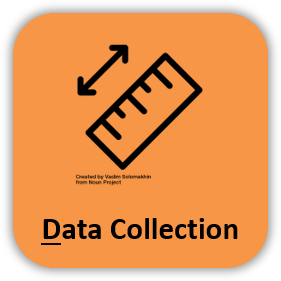
Use rigorous research methods to trial the BI solution and measure its impact on behaviour
key activities
Working cooperatively with project partners and members of impacted populations:
- Discuss and evaluate relevant ethical considerations for monitoring the trial.
- Launch the trial of the BI solution and collect data to measure behaviour change.
- Monitor the trial to ensure it is unfolding correctly and that data is being measured and recorded correctly.
- Ethics training: All researchers should complete TCPS 2: CORE training prior to planning or conducting quantitative research.
- Ethics review: In most cases, the project team should submit to a Behavioural Research Ethics Board for third-party ethics review prior to launching a trial.
Evaluation
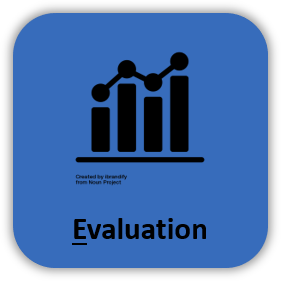
Analyze, interpret, and visualize the data to determine if, how, and how much the BI solution changed behaviour
Key Activities
Working cooperatively with project partners and members of impacted populations:
- Discuss and evaluate relevant ethical considerations for the processing, analysis, interpretation, and visualization of the data.
- Download, prepare, and process data.
- Conduct descriptive statistics to explore the data and inferential statistics to evaluate the impact of the Behavioural Insights solution on behaviour.
- Interpret and visualize the results of the trial.
- Synthesize the results of the trial to inform evidence-based recommendations.
Third-Party Resources
- Data-to-viz.com’s data visualization decision tree is meant to help you select the right visualization for your data.
Scaling
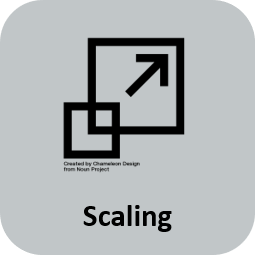
Co-develop and communicate evidence-based recommendations for scaling, sharing results, and/or other next steps
Key Activities
Working cooperatively with project partners and members of impacted populations:
- Discuss and evaluate relevant ethical considerations for the implementation, scaling, and third-party use of the Behavioural Insights solution.
- Draw on research results to create evidence-based recommendations for if and how the Behavioural Insights solution should be used. Key recommendations include:
- Whether and how the solution should be implemented beyond the trial.
- Whether, how, and to what extent the solution should be scaled beyond the tested population and context.
- Evaluate the implementation of the project, including limitations and lessons learned.
- Develop a plan to communicate project results and takeaways with different audiences, including project partners and other researchers/practitioners.
Third party Resources
- Monash University’s Scale Up Toolkit
Project Management

Coordinate with project teams and partners to manage BI projects
Project & Client Management
Many partners require documentation to work together. Here are some templates and tips:
- Statement of Work (SOW): Sample SOW template.
- Collaborative Research Agreement (CRA): Sample CRA templates, courtesy of UBC University-Industry Liaison Office
- Privacy Impact Assessment (PIA): PIA guidelines and sample PIA template, both courtesy of BC Public Service.
- Non-Disclosure Agreement (NDA): If a partner requires an NDA, ask if you can present and/or write up the project if you will share only aggregate data. Other options may include acknowledging the partner or obscuring the identity of the partner (e.g., a large Canadian city or a provincial government ministry).
- Best Practices for Data: Request that the partner’s data team de-identify all data before sharing any data with the project team. This means removing all personally identifying information and substituting in participant identification numbers that the partner’s data team (and only the partner’s data team) can use to re-identify participants. De-identified data greatly simplifies concerns around data privacy and confidentiality.

